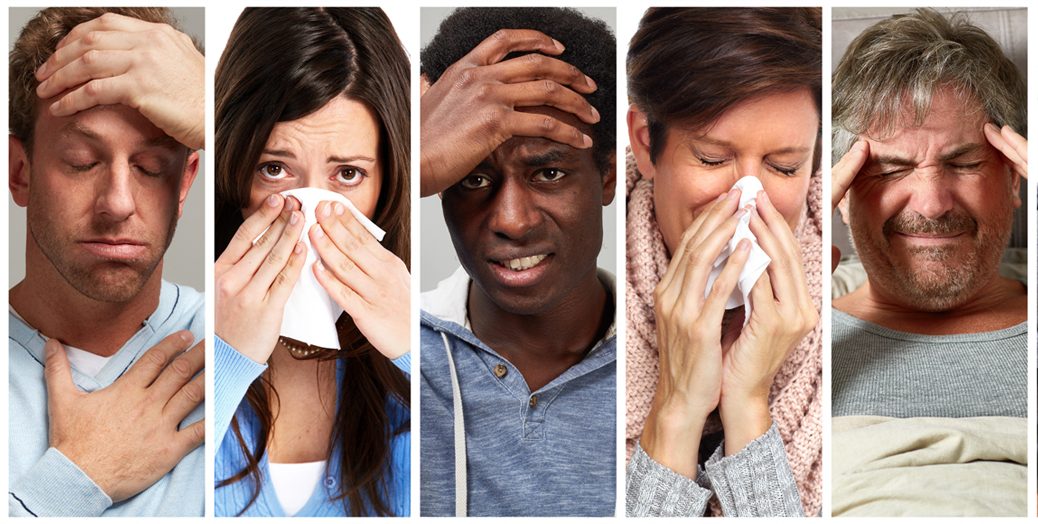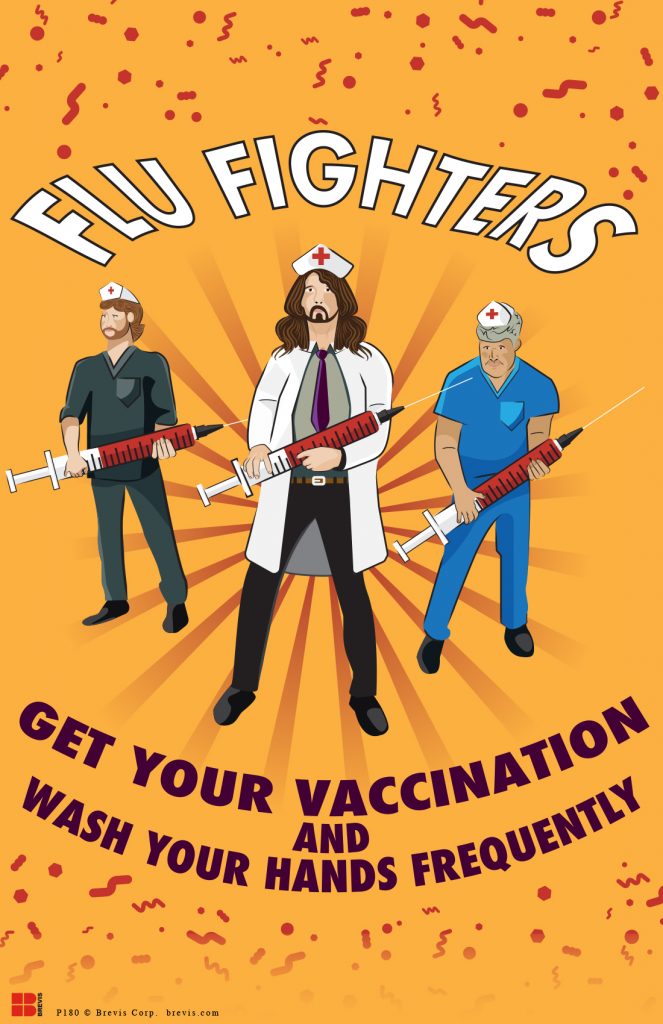As anyone who has suffered from it knows, catching the flu is a horrible experience. The fever, chills, aches, soreness, muscle pain and extreme fatigue that flu causes will keep the afflicted in bed for days. Besides being in pain and miserable, the sick person will have to miss days or weeks of work – their entire life will be put on hold. Worse, in extreme cases the illness can be fatal. While the vast majority of sufferers survive, every year hundreds of thousands die from the flu worldwide. Clearly, flu prevention is vitally important.
View All Flu Posters
Luckily, concrete steps can be taken to reduce your chance of getting sick. Every year The Centers for Disease Control and Prevention prepares a vaccine that is available to the entire population. Since there are different, constantly changing strains of flu, a new vaccine must be prepared annually. This vaccine will prevent most cases of the virus. The vaccine’s effectiveness varies, but it is generally within the range 60% to 90% effective. Getting a flu shot once a year is the best way to prevent the flu.
The flu virus is most dangerous during cooler weather, so what is called the ‘flu season’ runs from fall through spring. To best prevent the flu, get your vaccination a few weeks before the flu season begins in October or November (the start date varies slightly). Please note that it will take approximately two weeks for the vaccine to take its full effect. Since there are no serious side effects associated with the flu vaccine, there is no reason not to protect yourself.
While almost everyone can and should get a flu shot, there are a few groups who are unable to. Babies under six months of age do not have sufficiently developed immune systems and must forgo immunization. To ensure the health of these young children all those who come in regular contact with children under six months should make certain they are immunized. In addition, sufferers of certain allergies cannot receive a shot. Those who have fevers the day of their immunization must reschedule for another day.
As valuable as the flu shot is, it does not provide perfect safety. A 60%-90% prevention rate means there is still a chance you will get sick. For even better protection you should take additional precautions to shield yourself from the virus. This is especially true if you are of an advanced age – the flu is very dangerous for the elderly – or if you are a caretaker for an infant.
The key to further flu prevention is good personal health and hygiene. Since the flu spreads via water droplets released when a sick person coughs or sneezes, hand washing is the best way to combat the virus. Wash your hands frequently, especially after meals or personal contact. Use either soap and water or an alcohol-based hand-sanitizer (such as Purell). You should also avoid touching your face as much as possible. At home, regularly clean countertops, doorknobs, bathrooms, and other surfaces that are frequently touched. Avoid, if possible, those who you know to be sick with the flu.
Follow these recommendations and your chances of getting sick with the flu will be greatly reduced. The best step, by far, that you can take to protect yourself is to get an annual flu shot. However, it’s also important not to assume that immunization leaves you completely protected. Be sure to practice good hygiene as well. Rigorously following both steps will give you the maximum protection possible from a painful and dangerous bout with the flu.


